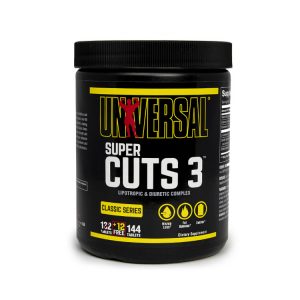Back & Bi’s With Michelle Bresnahan
Back and biceps are two of my favorite muscle groups to train. People often ask how I manage to shape my bicep and build the peak. It’s not just about reps and it’s not just about the weight. It’s also about the angles of each exercise and your form when doing so. I am currently training for my first NPC figure competition coming up this October. Instead of focusing solely on my body’s aesthetics, maintaining a high level of strength is also important. In order to compete in both bodybuilding and powerlifting, my lifts must be geared to both shaping and building each muscle group. https://www.youtube.com/watch?v=m_mtKvcYCag This exercise routine included working back and biceps together. Sometimes I prefer to work arms and back separately and other times I incorporate arms with complementary body parts. Back and biceps fall nicely into a similar category of a pull motion. The biceps are actively engaged during a back workout; therefore, pre-exhausting the muscle and really working on a higher rep range with controlled movements can help target every angle. During this workout I focused on the negative movement. Muscle is proven to be stronger during the lowering of each movement due to the effect of gravity. As we lower the weight, gravity is on our side. Allowing that weight to simply fly down back to its starting point is not engaging the muscle to its fullest capacity. That is where negative movements come to play. By controlling the weight and slowly lowering it back to the starting position, we are working against gravity as we use each muscle fiber to combat that movement. By doing so, we break down the muscle fibers and add stress to the muscles allowing for more growth in return. Negative movements are perfect to incorporate into your workouts, but it’s important to remember that switching up the workouts and working both the positive and negative movements is pivotal in terms of muscle growth and development. I started this routine with seated cable rows using the v-bar grip. My reps ranged around 10 regular reps with an additional five negative reps. I repeated this movement four times. With each pull, I engaged my core, and kept my body stable as I focused on pulling with my outer/inner back muscles. Sometimes I switch the angle of where I choose to pull the cable, but for this workout in particular I kept the pull tight, low, and close to my lower gut area. The positive movement was explosive as I pulled the weight toward me and when I incorporated the negatives, I released for a count of 5 seconds. Then I moved to the wide grip cable pull down to target my outer lats. I incorporated the negative movement in this workout as well. About 10 regular reps followed by an additional five slow and controlled negative reps. After working the negative movements consistently for several months, I noticed a dramatic increase in the size and shape of my outer lats especially. The final back exercise I did was dumbbell rows. These are one of my favorite back exercises. The entire body must be engaged and completely stabilized in order to correctly pull the weight off the ground and bring it up in a controlled motion. I did not incorporate negative movements with these for the sake of going heavier and focusing on controlled, lower reps. Maintaining strict form and fully extending the arm to the ground (your starting position) is important to develop the back muscles completely. After three solid exercises for the back, I moved to biceps. There are so many different exercises for biceps, but I recently learned some new ones that I wanted to share. I have always done standing bicep curls, but never against a wall or never seated. This time, I chose to stand against a wall while curling the dumbbells to avoid any interference from my legs or the rest of my body. By standing against the wall, you can eliminate any factors that would prevent you from working just your bicep. I did 15 reps per arm and took a 30 second break before banging out 4-5 more reps to pre-exhaust the muscle. I performed this exercise four times. My second exercise involved the barbell. With this exercise, you really do not have to add a lot of weight. It’s important to control the weight more than anything. Standing upright with your feet shoulder width apart and hands wider than shoulder width, curl the bar up and train the eccentric. Slowly lowering the bar will once again help break down the muscle fibers and stress your bicep, allowing it to grow. Perform 10 reps followed by an additional five negative reps, or focus solely on the negative movement. Then I moved to the cables for my final bicep exercise. I used the straight bar to once again incorporate the negative movement. The total rep range for this exercise was around 20-30 reps incorporating negatives throughout. Last but not least, I finished with a final back pump using the straight bar for a final push-down movement. I performed about 20 reps followed by 5 slower reps to focus on the contraction of my back muscles and good form. Ready to feel the burn? Give it a go. Trust me. You won’t regret it.

